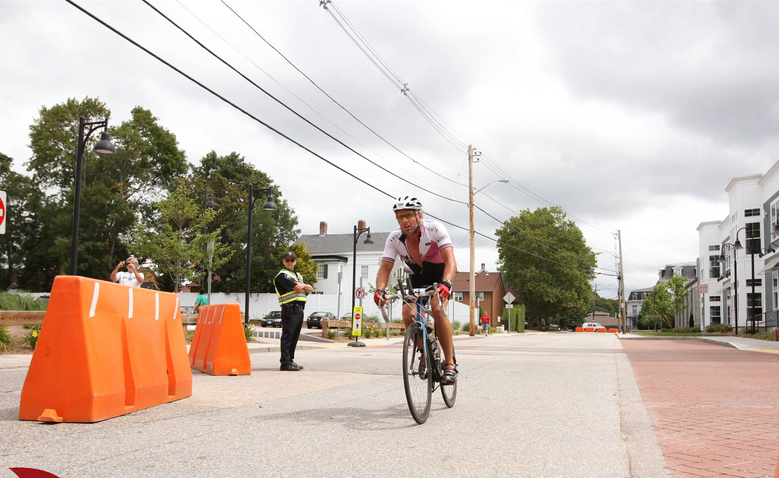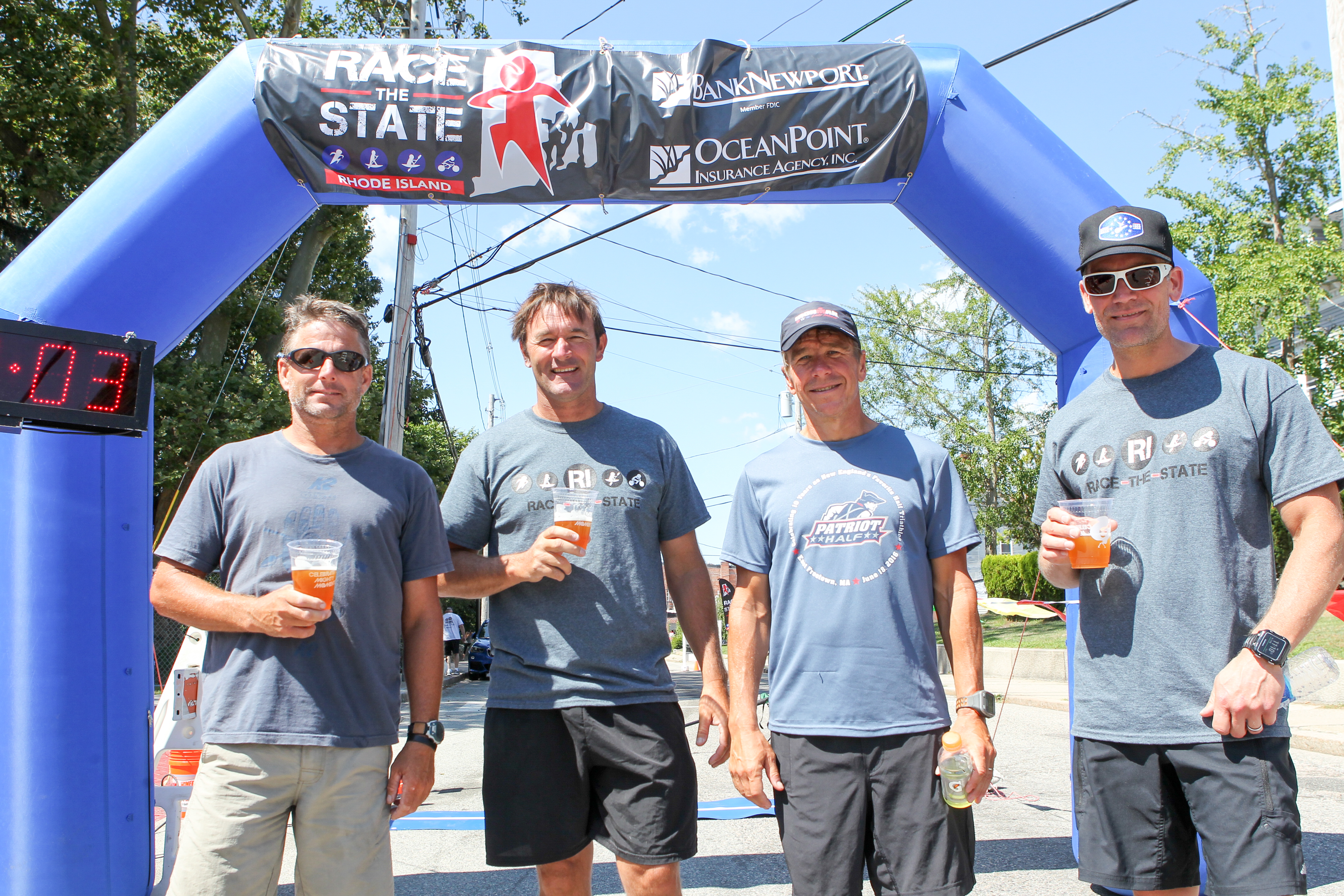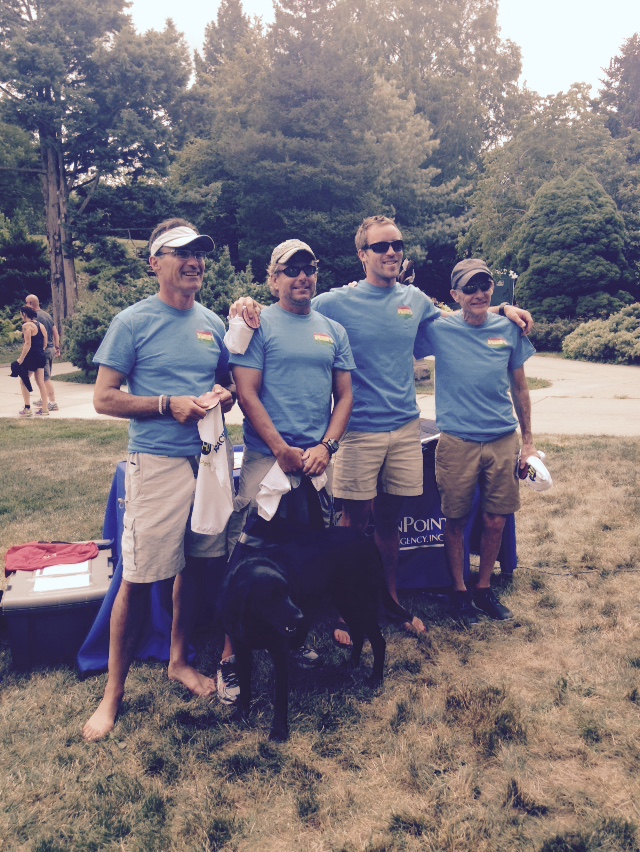The post Kayak Training Guide appeared first on Race the State.
]]>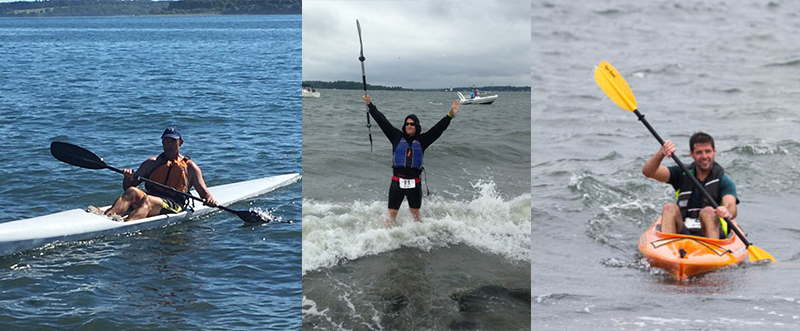
Tim Dwyer’s Secrets To Staying Ahead

In 2015, as part of Team Kettlebottom, the 4 person relay winning team, my kayak leg was about 20 minutes faster than the next competitor for several reasons.
I expect that significant time gap to shrink as people learn how to paddle better, use the right gear and paddle fast boats. Most people paddle kayaks that are too short, too wide, too heavy and too slow to be either enjoyable or competitive. Paddling fast on the ocean is an awesome workout and addictive.
Here are some of my secrets of staying ahead:
1) my Epic V10 surfski kayak was the lightest, longest and fastest in the fleet
2) I use an ultralight Epic wing paddle
3) I practiced paddling the course in all conditions and was ready for wind and waves
4) I do about 15 surfski races from March through November and am race hardened
5) I get some coaching from paddlers better than me
6) I maintain a combination of strength training, cardio fitness and paddling year round
7) my forward stroke technique is efficient and practiced
8) my boat fits just right to take full musculoskeletal advantage
Train with Tim Dwyer & shave minutes off your kayak time!
For an introduction to some of these principles and to see what go fast surfski kayaks and gear look like, sign up for a 2 hour Intro to Fast Paddling which will be held on Sunday, June 4, at 10:00 by the Kings Park boat ramp in Newport.
Cost is $25 per person. Contact Tim at [email protected] to reserve a spot.
If you have one bring your own boat, paddle and PFD so we can talk about your gear how to get set up optimally. If you don’t you can still look at what others are using and learn a lot about gear.
Small group or private instruction/coaching available.

Q&A with Mike Giles, 2016 Kayak Leg Winner
How did you train for the kayak leg of Race the State last year?
I live in Cape Town and here, we are lucky. Surf skiing/paddling is still a growing sport and easily done. Credit goes to guys like Billy Harker, who have pushed the sport to make it fun and exciting for all levels in not only Cape Town, but throughout the coastal regions. During the summer months, there are evening races on Tues, Wed, Thursday, Friday evenings and weekends are series races. That gets you out the water and having fun. If you manage 2-3 of those that’s enough training.
Would you do anything differently this year to be more prepared?
For sure. The course last year was great. It included a portage and then an uphill finish. Being able to transition quickly from paddling into running would save time. So definitely worth spending time practicing the portage in/out and then incorporate a sick hill run at the end of the paddle.
Any cross-training recommendations for on land?
Although paddling is a cardio sport, it helps to do other cross-training. I try cycle, swim and run. Saying that, it is important to know your body’s neutral position to preserve posture. Having the correct posture and engaging the correct muscles helps with performance and injury prevention. Try mix up training with Pilates, Yoga or Gyro tonic. Newport has all of the above.
How was the kayak course last year?
The course was great and weather near perfect. I can imagine if the wind blows, it will be more challenging with a side swell.
Anything particular or unusual about the course that is important for competitors to note?
Like any endurance event, it is easy to go hard too early. Save something for after the portage and for the final hill run finish. The hill, although only a few 100 m, is challenging. Remember to have fun!
The post Kayak Training Guide appeared first on Race the State.
]]>The post Cycling Training Guide appeared first on Race the State.
]]>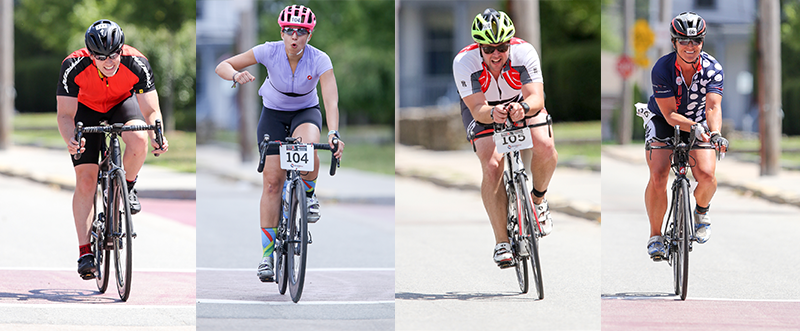
Tips for crushing the bike leg of Race the State from Terry Halpin, bike course record holder at 1 hr 10 min 33 sec!
What do you think of the course?
The bike course is good; it has quite a bit of terrain to it – 900ft of elevation, I think. The hardest part about it is not to go too hard on the first hill. Once you cross Post Road (aka Route 1), it’s pretty much “game on” all the way to the finish.
It’s a beautifully scenic, rural course…going by the lake is especially nice. It’s a rolling hills course, which, for me, is pretty good. Maybe some people don’t enjoy that as much as I do. You have to maintain a pretty steady power output, and keep going along.
The roads are in good condition mostly, [it’s] a little rough going over Chase Hill Road so you need to be mindful of that because you’re going quite quick going down the hill. But all in all it’s a very nice, scenic race.
Anything on the course competitors should be aware of?
If you do a reconnaissance mission on the course, some of the hard turns become part of your memory and you’re able to anticipate them instead of being surprised. Generally speaking, the traffic was quite light, and I didn’t have any problems with that.
How do you prepare for the race?
The two years I’ve done it, I managed to recon the course a couple of times each year. I feel like its very important to know where the turns are and where you can accelerate and make the most of your available energy before you try to accelerate too quickly in an area where you’re going to have to slow down or turn. I can’t say enough how important it is to recon.
The ride is only 29 miles, so for my recon I went out and back from the URI Bay Campus. It’s pretty critical, [the recon] will show you the steepness of the first hill, and force you to figure out how to manage your time going up that—it’s not where you’re going to win the race, but you can certainly lose it there.
How many miles are you riding a week?
150-180 miles a week, mostly by myself. 2-3 days I’ll ride with a group, but mostly by myself.
Any advice for first timers?
The best thing you can do is try to find an aerodynamic position on the bike that you’re comfortable in. I rode a standard road bike, but made adjustments to the position and added a set of aero bars for a bit of aerodynamic performance and it seemed to work well for me.
Anything you do to keep yourself motivated during long rides?
Dream of what might have been… No, just kidding.
For the race, it’s important to prepare for conditions of the day, as not being prepared will affect your motivation. If it’s dry and hot, bring enough water. I’d probably something to eat, maybe, 2/3 a way during the leg. I don’t, personally, have issues staying motivated for 30 miles, that’s less than a standard day on the bike, for me!
Any suggestions for someone who doesn’t have enough time to do many long rides during a week?
Anything that gets you time in the saddle. If you can increase your endurance, that is probably the best method of training. One is interval training, high intensity for short bursts, both increasing the intensity and lengths of the bursts over the course of a long period of time so your body because more in tune to running at threshold. Try and ride the mileage. If you can ride 2 hours on a stationary bike, if the weather’s not good, or you don’t have enough time to get outside when it’s light, that should get you through.
And last but not least, enjoy it, have fun!
The post Cycling Training Guide appeared first on Race the State.
]]>The post Run Training Guide appeared first on Race the State.
]]>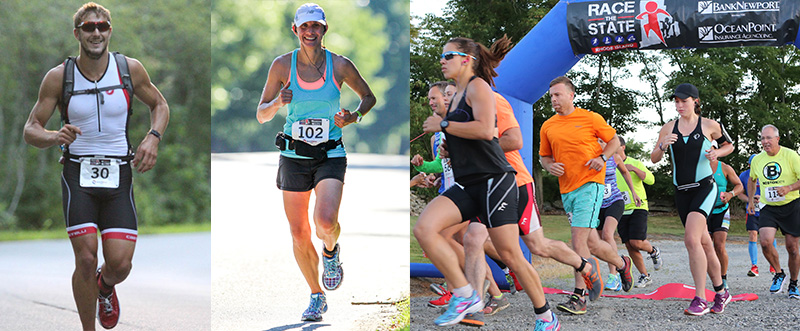
Tips and tricks for mastering the run legs of Race the State!
We caught up with Dirk Johnson, member of the team with the fastest overall time, Island Idiots. Dirk contributed to the team’s overall ranking by running the second run leg of the course with a split time of 7:33/mile!
Normally I live on the Port-o-John line until the national anthem starts to play, which if I plan right gives me about 30 seconds to find my way to the starting line in time for the gun. Once the gun fires I’m good to go, unfortunately the waiting before the start also makes me good to go.
Unlike most running races where you have a prerace routine and known starting time, Race the State, as a relay, does not afford you the luxury of knowing exactly when your leg of the race will start. This can cause some anxiety for those who have pre race bathroom jitters as I do. Do your prerace transition area recon and know where the nearest port-o-john is, or if none, do yourself a favor and pack some TP in your kit, it’s much less stressful than looking for the nearest available properly sized leaves…
Transition 1
Once your teammate has come off the SUP it’s your job to remember to transfer the timing chip. Don’t expect your winded and exhausted teammate to remember to take it off and hand it to you. Nothing worse than getting through your run and reaching the Ft Adams transition only to have your relay teammate asking where the chip is. Ugh…
The Run – Strategy
While the nature of the race is an endurance effort, it is critical to pace properly yourself within a small or nonexistent running pack. I never saw another runner the whole 12.3 miles last year after the Sandy Point hill. It takes some practice and mental toughness to run at 100% race effort by yourself and without pacing runners. It’s very easy to let up ever so slightly with no other runners around.
On the other hand you also can’t run looking over your shoulder the whole time. Faster runners undoubtedly will catch you and pass you, do not get into a drag race when it happens. Stay in your zone and ignore them, run your race not theirs.
The hills are the hardest part of the run and it’s important to manage them. Adrenalin pumped, energetic and excited, you will want to gallop to the top amid the cheers of the fans lining the side of the road, big mistake! Stay in control here, yes you will spike your HR and yes you will have to recover once at the top, but just don’t blow up. Keep your breathing steady and do NOT go anaerobic this early in the race.
Once on the road, cars, dogs and pedestrians will not be giving you special racing room as they will have no idea you are in a race. You will look like every other Sunday jogger who stops at intersections and looks both ways before crossing. When you dash across the road make sure you have the opening you need.
Back to hills, there are 4 hills that will get your full attention before the race is over. Everyone knows Purgatory Hill at Surfers End which is minimized somewhat by the left turn onto Tuckerman part way up. Memorial Hill is next, watch the cobles past the entrance to Cliff Walk. Once on Ruggles the steep dip and Rogers Highschool Hill thereafter will get your heart going but it’s way too early to think about kicking it home from here. Regain your rhythm and hold on as you still have over a mile and one last sneaky badass hill at the Ft Adams entrance yet to come.
Finally you turn right into Ft Adams feeling the elation of being almost done. However this glow quickly fades as you start to feel the hill that you didn’t even know was there start sapping the last energy from your legs. You will feel like you are running in quick sand and your HR will be redline by now. Power through this with head high past the Ft Adams guard shack and you will see the finish down on the beach. It’s all downhill from here…!
Dirk and his teammates celebrating at the finish line in Westerly after Race the State 2016!
Additional Training Tips
Offseason: just because it’s cold out doesn’t mean you can’t run! But don’t take our word for it, check out these tips from a Boston Marathon winner on running in the winter.
Know the Routes
The first and third legs of Race the State are designated running legs. Before doing any road race it helps to familiarize yourself with the course. If you’re in the area, practice running the race course a few times leading up to the race. If you’re not, here’s a break down:
The Sprint – the first run leg is a short 4 mile run. The course is straight and flat with only a few road turns that are clearly marked by signs and traffic police. There will be water provided at the start of the race and at the finish of this sprint leg, but not during. If you’re new to running, taking on this first leg as part of a team is a great goal to set for yourself and work towards!
The Long Haul – the second run leg is the leg that brings you from the SUP finish to the kayak start at Fort Adams. This is a big run, people, so train accordingly. The route is beautiful and scenic but along with the rocky cliffs of Aquidneck island come hills. We recommend running this route ahead of time or incorporate hill sprints into your training.
Run with a group: Get your friends to sign up for Race the State with you and make weekly plans run together and you’ll be less likely to back out!
Speed training: do some Fartleks. Sounds funny, but does wonders for your speed. Grab a timer and get going.
Unconventional speed training: run fast or the zombies will get you! This app is Pokemon Go! meets zombies meets Race the State training. Turn on the app and start running, listen to music as you normally would. When you hear the zombies chasing you, pick up your speed! Set up timed intervals or have the app surprise you with zombie attacks!
Practice the transition: the second run leg comes after the SUP leg. If you’re doing both legs, don’t let race day be the first time you run directly after paddle boarding! If you’re on a relay team, don’t forget the timing chip!
Practice, Practice, Practice…
Warm up for Race the State with some of these other local races:
March 4 – Boldrdash Winterdash 5k, Exeter, RI
March 19 – New Bedford Half Marathon, New Bedford, MA
April 15 – Newport Marathon and Half Marathon, Newport, RI
May 20 – Mystic River Run and Paddle, Mystic River, CT
The post Run Training Guide appeared first on Race the State.
]]>The post SUP Training Guide appeared first on Race the State.
]]>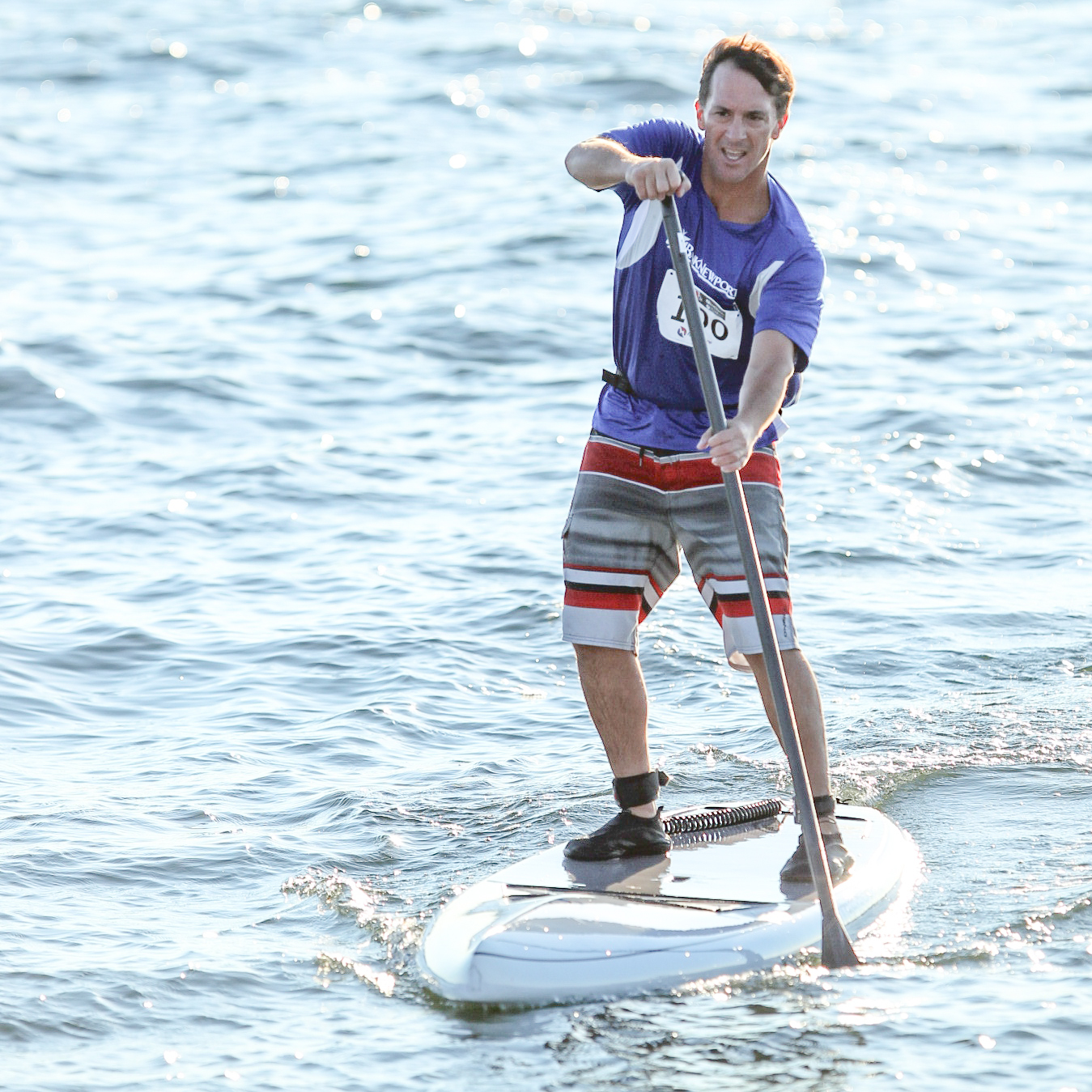
Tips for a successful paddle leg of Race the State!
Now that Race the State is on your radar, its time to start thinking about a training regime that will have you performing your best on race day! Paddle Board RI is gearing up with RTS to offer a special discount for Race the State competitors who join our weekly Skills-n-Drills class. These classes are designed for paddlers that have the fundamentals down and now want to excel at specific skills such as distance training, interval training, pivot turns and advanced paddling techniques to up your game for race day. Sessions will focus on different drills, training routines and time trials for participants to evaluate their performance over the course.
If it’s too early to think about playing in the water just yet, remember there are tons of other ways to start preparing for a distance SUP race, and to get ready for the other events at Race the State. Try adding cardio, such as jogging or jump rope, for the distance bike and run, if they are not already part of your routine. Indoor rowing and strength training will get you ready for the kayak crossing. And, if traditional methods aren’t for you, it’s always fun to step out of your comfort zone and try something new to keep you fit, challenge the body and mind, have fun and keep your goals in sight!
Know the Water
The paddle leg of Race the State crosses the Sakonnet River going East to West. For paddling on a river, current, wind direction and speed, and waves are important factors to consider. It’s helpful to get out on the body of water you’ll be racing on in different conditions to practice and be most prepared for race day!
Current: check the local tide chart to find out what the current is going to look like at the time you’ll be paddling. If the tide is coming in or out, you’ll have some push from the water either up or down the river, respectively. If the tide is slack (at peak high or low), you will not feel much current at all.
Wind Direction & Speed: If the wind is coming from the direction you’re trying to go and is decently strong, it can slow your paddling efforts significantly. The stronger the wind, the more challenging it will be to paddle against (or, the more helpful it will be if its coming at your back!). Usually, the wind is pretty light (low velocity) on summer mornings in RI.
Waves: while we’re on the subject of current and wind direction/speed… if you have the magical combination of strong wind against current, the result will be big waves. Those types of conditions are challenging and you must be prepared for this in order to be fast and, more importantly, safe!
Training
Offseason: cross train for paddle boarding in the winter with Crossfit, indoor rowing on an erg, and these exercises that will help you build up the muscles you need for paddling.
Get out on the water: train like a champion. Even if he’s not paddling, 2016 SUP world champion, Kai Lenny, is out on the water everyday doing some type of watersport.
Improve your technique: check out these tips from SUP expert Dave Kalama.Follow his blog for more tips.
Practice the start: “Don’t overlook the start!” says top ranked US SUP racer, Candice Appleby. “My favorite type of start is a running one because if you get a good skim, you can leave your competitors behind. Read more tips from Appleby here.
Get Inspired: the video name says it all: Stand Up Paddle is Amazing.
Practice, Practice, Practice…
Warm up for Race the State with some of these other local races:
April 30 – Run of the Charles, Boston, MA
May 21 – Mystic River Herring Run and Paddle, Mystic, CT
June 18 – SoundSurfer Waterman Challenge, Bridgeport, CT
June 19 – Charles Island SUP Cup, Milford, CT
Equipment
Lifejacket: no matter your level of expertise, it’s always prudent to wear a lifejacket or flotation device when paddling out on the water. Race the State rules require competitors to wear a lifejacket or PFD during the paddle board leg of the race. If you don’t have one, you can purchase one from Team One or West Marine.
Leash: some may call it a “kook cord” but we don’t care, race rules require competitors to have and use a board leash. You can get one at your local surf shop.
Paddle: paddles can differ in material, length, blade width and height and palm grips. Check out this guide to find the right one for you.
Last but not least, The Board: length, width, bend, shape… there are many factors to be considered when choosing a paddle board! For racing, you want a board that is built for speed. Look for a board that has a displacement hull (pointed, not rounded), is long (>12′), narrow (<30″), and has straight stiff fins. If you don’t own a board and don’t want to, no problem! There are many local options for renting a board for race day.
The post SUP Training Guide appeared first on Race the State.
]]>The post Kayak Training with Tim Dwyer appeared first on Race the State.
]]>Tim Dwyer, the kayaker with the overall fastest time in the 2015 Race the State Kayak leg (with a time of 1:01:25.4) has teamed up with us to give our racers tips to prepare them for the 2016 5.6 mile kayak leg!
Training:
To be fully prepared to Race the State, training both off and on the water is imperative, below Tim lists some suggestions for building your overall fitness and specific paddle strength.
Off the Water
- General fitness: a good aerobic base from endurance sports, running, biking etc. establishes a good base for paddling
- Core work: planks, stability ball, bodyweight exercises, burpees, mountain climbers, Russian twists.
- Paddle specific exercises: pushing and pulling exercises such as push-ups, pull-ups, bent over rows, band pulls, lat pulls
On the Water
- Paddling:
- Early season–establish a base with long slow paddles of 90’—120’ using quality technique to create muscle memory for proper form.
- Gradually introduce speed work by doing 4’ easy with good form and 1’ hard efforts x 15 repeats or more if you have time.
- If you can commit to 2x/wk. paddling do: 1) ii. For up to 2 hrs. 2) intervals 3’ on x 2’ easy x 10
- If you can commit to 3x/wk. paddling do: 1) ii. For up to 2 hrs. 2) intervals 3’ on x 2’ easy x 10 3) intervals 40” on x 20” easy x 40
- On water drills—designed to improve technique and power but beyond of the scope of this writing.
- Training tools: A Garmin type GPS/heart rate measurement device that gives Time, Speed, Distance and Heart rate is an essential training device. You can set up the workout and the beeper goes off to keep me from slacking. The Garmin Forerunner is one example and there are others. I use the Garmin 910XT but there are less expensive equivalent options. I get mine at REI or EMS in case they die and they are quickly replaced.
Stay tuned for more tips on:
- Forward Stroke: posture, efficiency, power, endurance
- Hydration/nutrition: pre-race, race and recovery
- Navigation: familiarity with the course, the portage, currents/wind, set/drift
- Race tactics: strategy/pace/drafting
As an outdoor guide and instructor, Tim sailed with Outward Bound and led kayak trips in New England and the Pacific Northwest, Florida and Alaska. For a fundraising effort Tim paddled 300 miles around Long Island for the Memory Paddle Challenge in a record setting passage. He has earned a number of national and regional Championships including the 2002 USCA National Kayaking Championship, the New England 2010 Surfski (kayak) Championship and the Paddle the Bay Kayak Racing series from 2002-2006. Tim completed the Kayak leg of 2015 Race the State finishing first overall in the kayak along with first place on Team Kettlebottom in the 4 person relay. Tim is a child psychologist and lives with his family in Jamestown, RI and consults for Epic Kayaks.
The post Kayak Training with Tim Dwyer appeared first on Race the State.
]]>